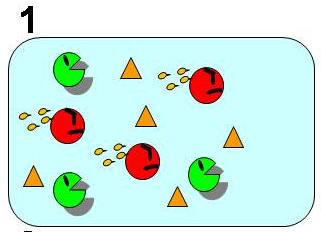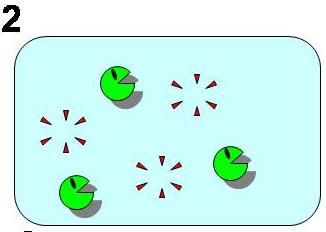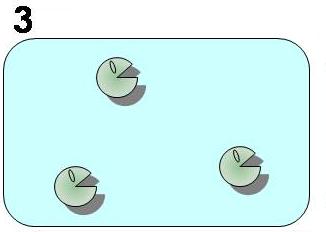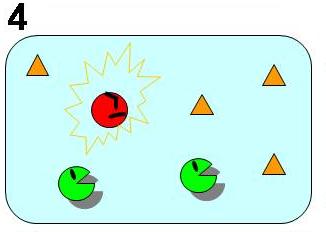Talk:Tokyo/Model
From 2007.igem.org
E.coli Follows Pareto's principle!
To follow Pareto’s principle like an ant society, our model system must satisfy the three conditions shown in Fig. 1 to 4. In our model, all individual cells have the same genetic circuits but take either of state A (worker) or B (idler) depending on the surrounding circumstances. They change their states as if they DIFFERENTIATE so that the ratio of the two cell states is well balanced. (What is Pareto's principle? (Wikipedia))
As shown in Fig. 1, 2, 3, and 4, the condition of the system is changing as follows:
Bistable state ⇒ The removal of A (worker) ⇒ Unstable state with only B left ⇒ Balanced Redifferentiation of B (idlers)



